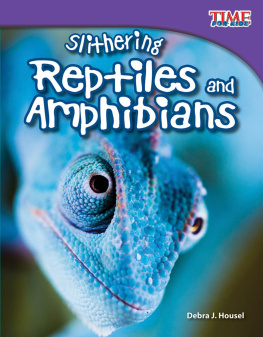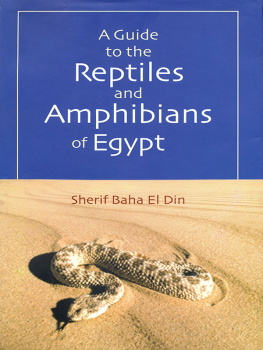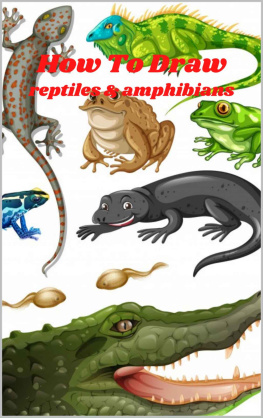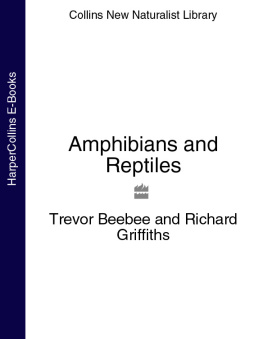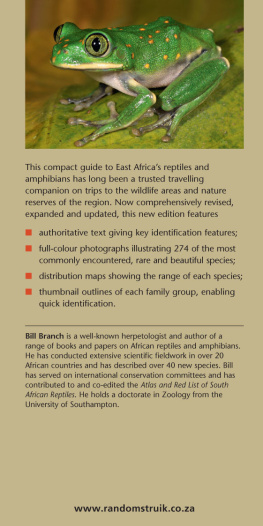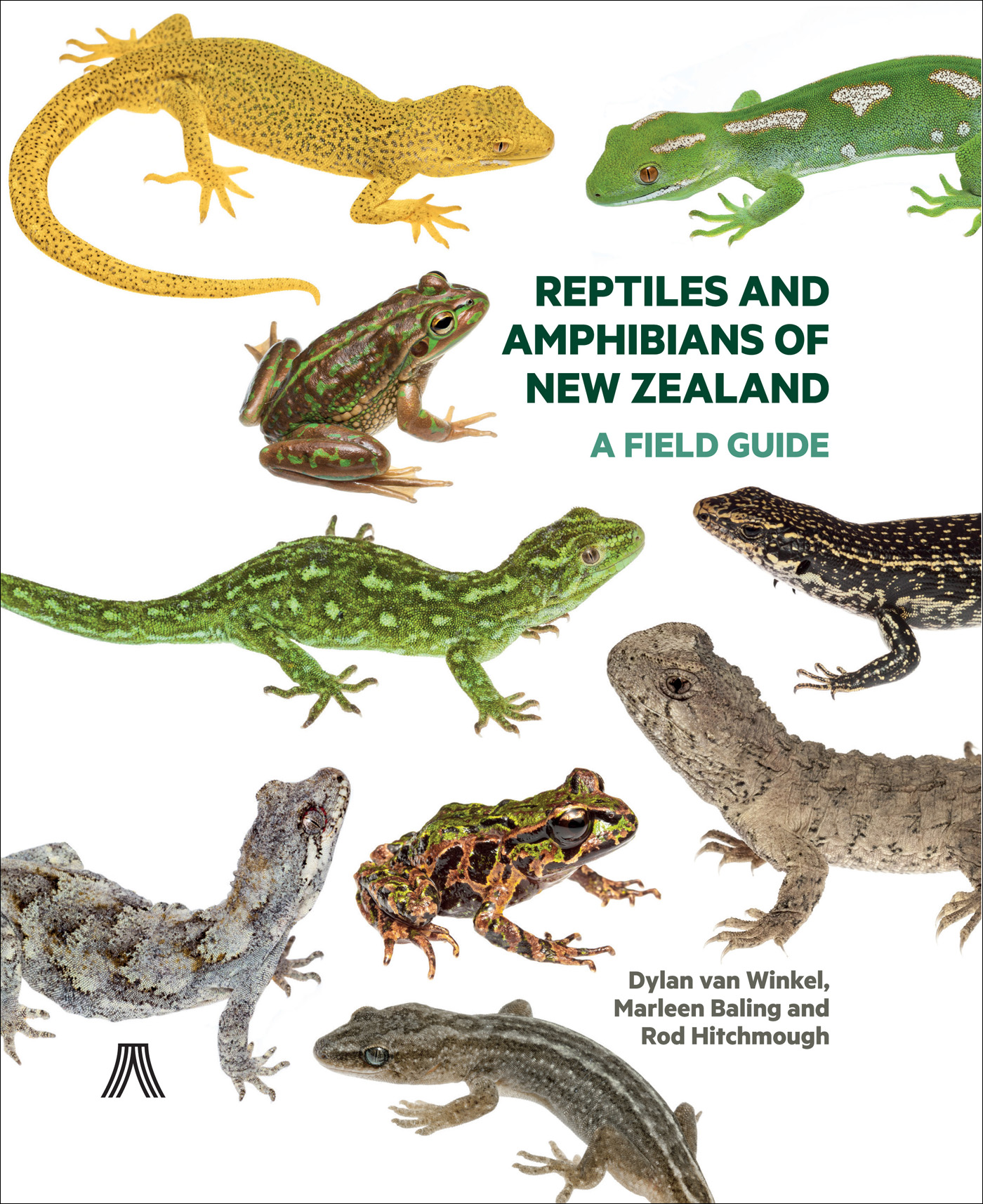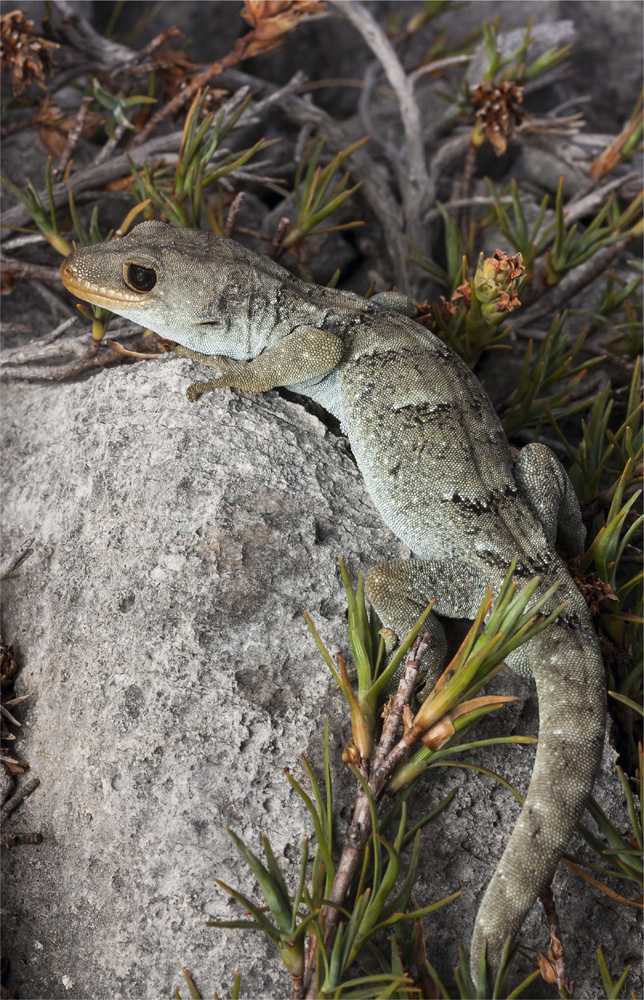Dylan van Winkel, Marleen Baling and Rod Hitchmough are wildlife ecologists and herpetologists with over 60 years of combined experience researching New Zealands reptiles and amphibians.
Contents
SPECIES ACCOUNTS

Three Kings gecko, Dactylocnemis Three Kings
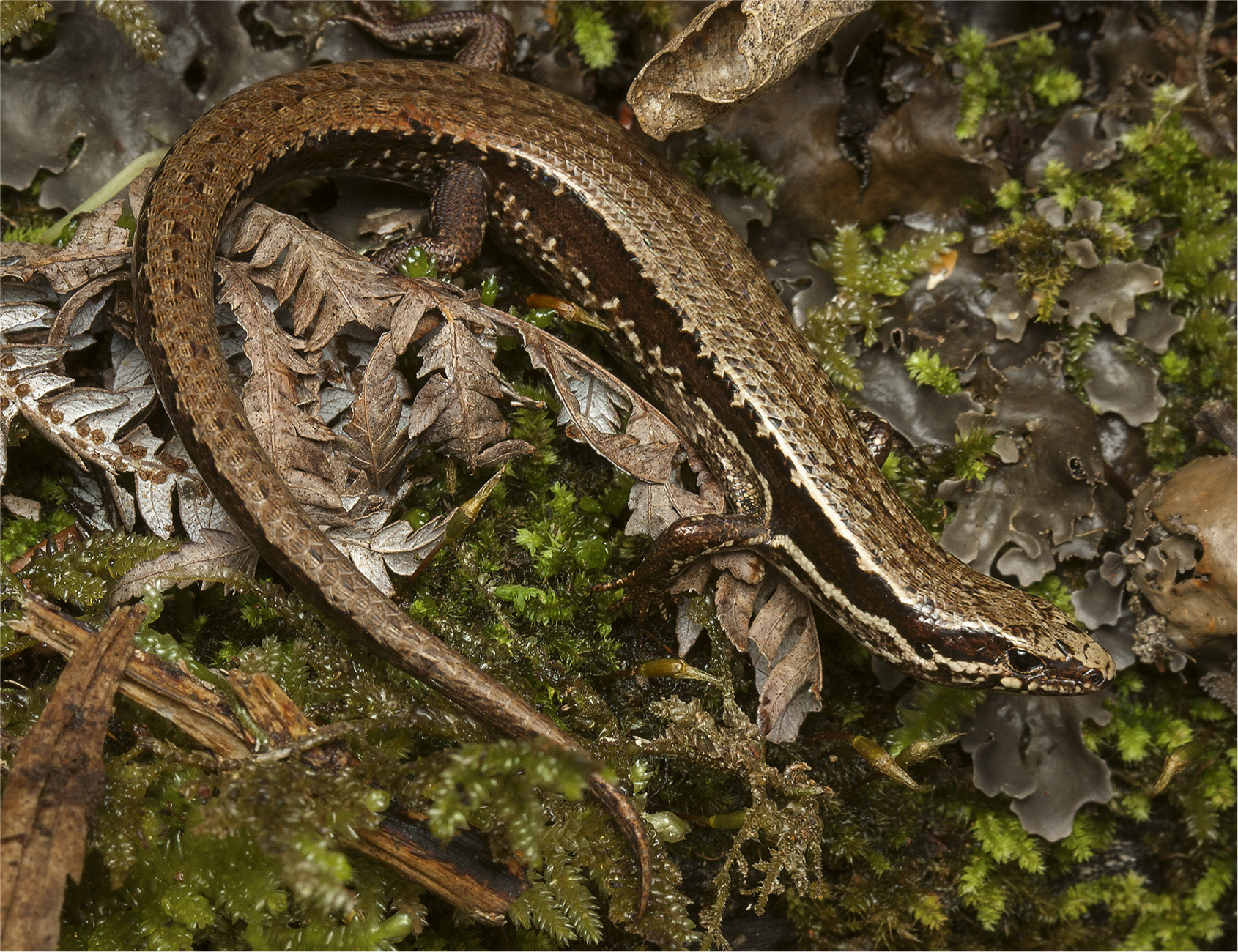
Whirinaki skink, Oligosoma Whirinaki
Acknowledgements
We would like to express our thanks and appreciation to all those who assisted and contributed in many different ways to the production of this guide. Foremost, we would like to acknowledge and express our gratitude to Geraldine Moore (DOC) for her tremendous efforts and time in creating the marvellous maps that enhanced the quality of this guide, and thanks to Katie Milne (also of DOC), who provided assistance.
Thank you to those who supplied images of taxa we were unable to obtain ourselves: Aaron Bauer, Trent Bell, Hal Cogger, Jamie Darbyshire, Nick Harker, Mark Jefferson, Dave Jenkins, Tony Jewell, Lisa Keene, Samantha King, Carey Knox, George Kruza, Marieke Lettink, Phil Melgren, Ken Miller, Colin Miskelly, Les Moran, Simon Peirce, Patrice Plichon, Jozef Polec, James Reardon, Ria Rebstock, Ian Southey, Jean-Claude Stahl (Te Papa), Roger Waddell (www.thegates.co.nz), Matt Walters, Chris Wedding, Sarah J. Wells and the late Tony Whitaker (via Viv Whitaker). Their specific contributions are also acknowledged beside their relevant image(s). All photographs and illustrations are by Dylan van Winkel unless otherwise stated.
We gratefully appreciate all those who provided field assistance and/or logistical support: Department of Conservation (DOC), William (Iain) Baggaley, Phil Brownie Brown, Rhys Burns, Kevin Carter, Mike Chillingworth, Jessica Feickert, Neil Forrester, Richard Gibson, Pip Green, Lesley Hadley (Friends of Flora), Nick and Tim Harker, Ben Herbert, the Manawatawhi/Three Kings Islands DOC team, Chris McClure, Haley McCoskery, Don McFarlane, Lynda McGrory-Ward, Phil Melgren, Sabine Melzer, Les Moran, Irene Petrove, Miriam Ritchie, Ivan Rogers, Sara Smeaton, Ruth Smith, Laurence Sullivan, Dive Tutukaka, Graham Ussher, Megan Vercoe, Tamsin Ward-Smith and Chris Wedding; and to those who provided information relating to specific taxa: Ben Bell, Phil Bishop, Paul Doughty, Jen Germano, Brian Gill, Dan Godoy and Kate McInnes. We are also grateful to those who granted us access to private captive collections: Doug Ashby, Ivan Borich (Ti Point Reptile Park), Dave Craddock, Andrew Christie (Kelly Tarltons Sea Life Aquarium), Richard Gibson (Auckland Zoo), Nick Harker, Dennis Keall, Joel Knight and Gary Molloy.
A special mention and thanks to Ben Barr, Marieke Lettink, and James Reardon for the company and essential assistance on excursions into the field, and for providing photographs and information on rare taxa. We also wish to thank Tony Jewell for imparting invaluable information on several lizard taxa and for his critical revision of the skink identification key.
We extend our thanks to David Chapple, Marieke Lettink, and Geoff Patterson who reviewed the entire text and provided constructive comments that greatly improved the guide. We also thank everyone at Auckland University Press, especially Sam Elworthy, Katharina Bauer, Katrina Duncan and Louisa Kasza for seeing this project through to completion. Thank you to Sue Hallas, whose copyediting skills greatly refined the guide, to Matt Turner for proofreading and Timothy Vaughan-Sanders for indexing. We also greatly appreciate the support by the Charles Fleming Publishing Award (2018) for assistance in the final stages of this guide.
Lastly, to our friends and families, your support has been overwhelming. Dylan is particularly grateful to his wife Sarah for her loving support, encouragement and assistance in the field, and to his son Zephyr for regular, but enjoyable, distractions while preparing this book. Marleen is especially grateful to Richard for his amazing patience and continual support during the many hours of her working on this guide. Rod is grateful to his DOC managers and directors for encouraging and supporting his work on this book, and to Grace, Liam, Judy and Julie for accepting his reduced availability over many weekends while this book was being prepared.
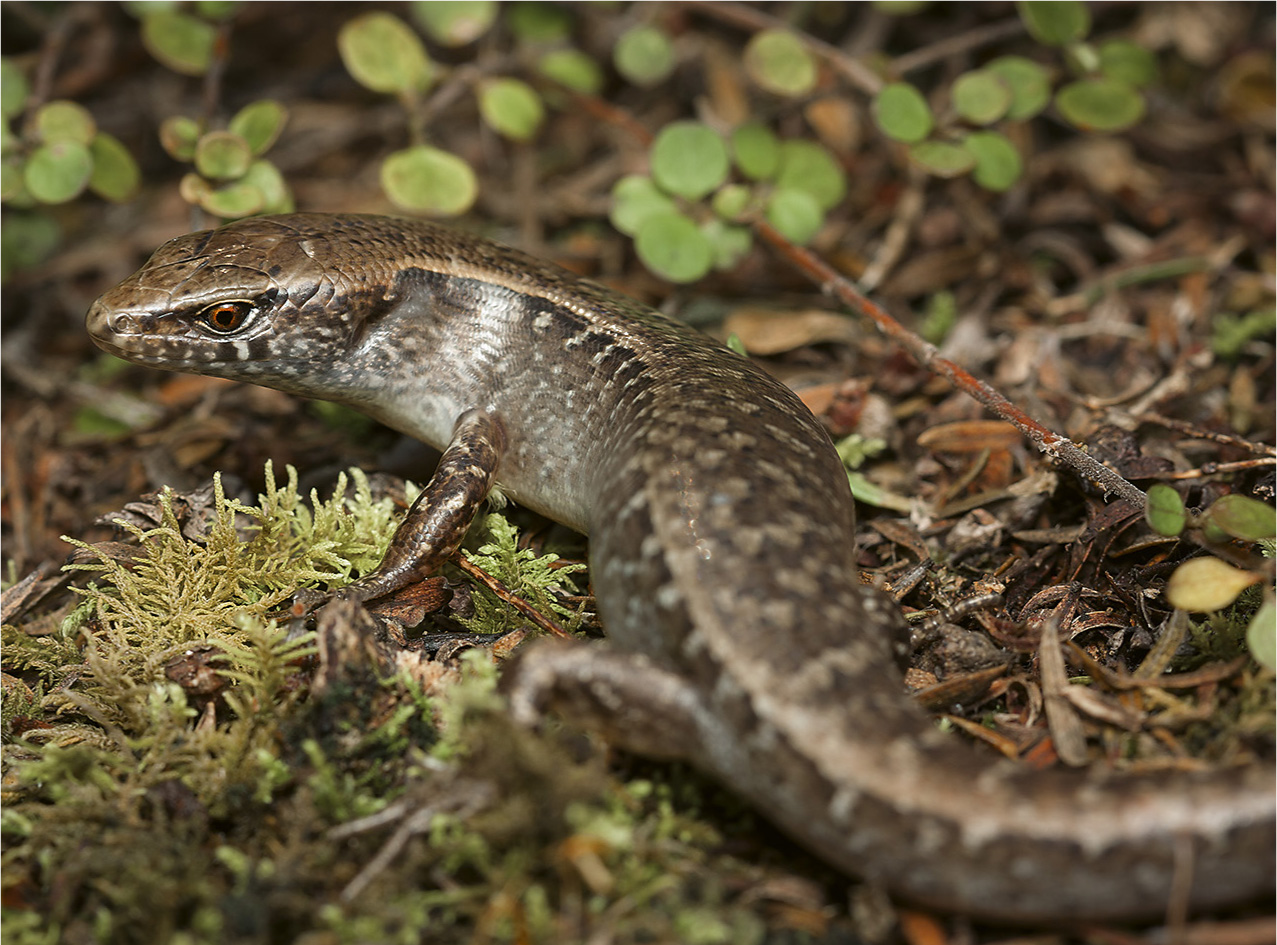
Ornate skink, Oligosoma ornatum, Three Kings Islands
Introduction
New Zealand is often recognised as a land of birds, particularly as a centre of diversity for seabirds, but it is New Zealands herpetofauna our reptiles and amphibians that is the most diverse of all native terrestrial vertebrate groups. Moreover, for its relatively small land area, this country supports one of the most diverse lizard faunas of any temperate region in the world. The New Zealand herpetofauna is highly distinctive, and includes the sole surviving member of the ancient taxonomic order Rhynchocephalia (tuatara), a genus of archaic frogs (


